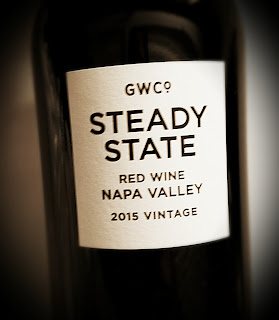Canned wine, I'm told, is the fastest growing trend in the wine industry. No longer a fad or gimmick - well, maybe it's still a gimmick - wine in cans is a 45 million dollar business. U.S. sales of canned wines jumped by 43% in the year leading up to June 2018.
Stupendous Cellars'
David Weitzenhoffer told Forbes that the market for wine in cans has been doubling every year, and he expects it to more than double this year. He calls cans "the greatest democratization of wine in our lifetime." Who's buying it? Those millennials, I guess, with all their white-water rafting and Himalaya climbing. They need a wine that's portable as well as potable.
If one can get past the packaging, cans really are a pretty good idea. No open bottles because it's a single serving. Fully recyclable along with all your other aluminum cans. No fuss no muss getting those darn corkscrews to work right. This is starting to read like one of those cable commercials where the person gets all flustered trying to do a simple, easy thing, then breathes a gigantic sigh of relief when the product appears that makes everything simpler and easier.
Right Now wines are sold in cans, fairly classy looking ones at that, and contain wine that's actually pretty good. None of the four I sampled were big thinkers, but they tasted fun, and when you need wine while skiing down a black diamond run you don’t want that darn glass getting in the way.
Winemaker and Master of Wine
Olga Crawford did a good job with the Right Now collection of red, white, rosé and shimmer. They taste good, have a nice level of acidity and pair well the sort of fun food one finds at a barbecue or a tailgate party. They sell for $24 for a four-pack
Alpine Stream White is made up of 85% Pinot Gris, 10% Viognier, 3% Sauvignon Blanc and 2% Vermentino. Alcohol lays low at 12.5% abv. The pale gold wine has mineral driven stone fruit, nice refreshing acidity. It's a bit earthy on the palate, which I like.
Shimmer Lightly Sweet Rosé is carbonated pink wine at 13% abv. Zinfandel grapes account for 40% while Petite Sirah, Cabernet Sauvignon and Petit Verdot make up most of the rest. Nine percent are written off as assorted varieties. It has quite an interesting look in the glass, dark pink-orange, and offers a nose of slightly candied cherry and strawberry. It tastes really sweet, Jolly Rancher cherry, with light bubbles for fun and a nice acidity for pairing.
Dry Rosé has California on the can and alcohol hits easy at 12.5%. The grapes are 35% Zinfandel, 32.8% Syrah, 30.2% Barbera and a 0.4% dollop of Merlot. This wine shows a nice salmon color, with a muted nose of cherry It's earthy, tasty, not too complex and has a wonderful acidity.
Red Number 8 is labeled as California, but contains a 63% share of Lodi Zinfandel, along with Petit Verdot, Merlot and Petite Sirah. Alcohol sits at 13.5%. It’s very dark, with an earthy nose of brambly black berries. The tannins are good, the acidity is great and the fruit is dark A bit of a short finish, but it's the best of the bunch.
Follow Randy Fuller on Twitter

















